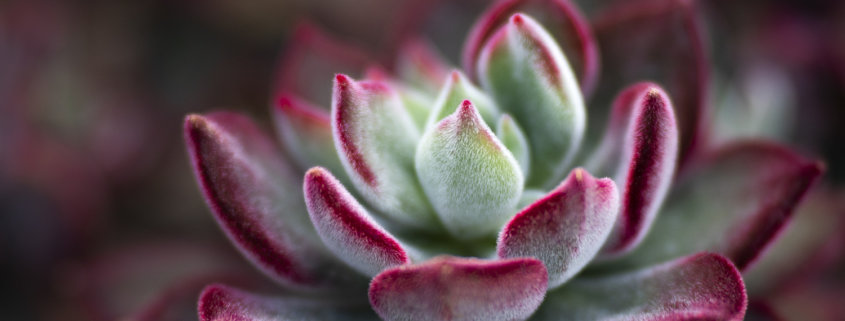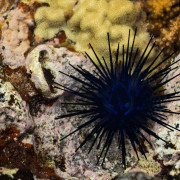Macro Photography Tips for Capturing the Beauty of Desert Plants
As a nature photographer specializing in flower photography, many assume that all of my photography involves flowers. My fascination with capturing the world up-close extends well beyond the world of flowers. In fact, some of my favorite subjects are desert plants. Whether you are photographing in a desert room or arid greenhouse of a local conservatory or botanic garden, or in the desert areas of the southwestern United States and beyond, cacti and other succulents are subjects filled with interesting details, lines, texture and patterns.
Deserts are biologically rich habitats with a wide variety of plant life. Learning a bit about these plants and their adaptations to an environment of extremes is fascinating. The unusual shapes, shallow root systems, waxy coating, and thorns or spines are all ways the plants have adapted to the harsh conditions of the desert and enable them to store and conserve water. Ranges in temperature from searing heat during the day to a 40 degree drop at night, rocky, sandy soil and precious little water have all forced cacti and succulents to not only adapt but thrive in their unique environments.
When photographing any botanical subject, I spend a great deal of time looking at and exploring my subject before I actually press that shutter button. Rather than looking at my subject in a literal sense, I am examining it in an abstract way – looking at its lines, curves, patterns, shapes, texture, color and gesture. Desert plants are wonderful subjects to learn to see and photograph in a more abstract way because they have such distinct lines, pattern and details. Any of these features can become subjects in their own right.

Agave ‘Blue Flame,’ 180mm Macro Lens, f/3.5 – Using a Wide Open Aperture to Draw the Eye to Curving Line of Agave
Equipment for Macro Photography
If you want to work up close, it is important to have a macro lens with a focal length of 90mm, 100mm or 105mm. A zoom lens, such as a 24-105mm will allow you capture small scenes of desert plants. A 70-200mm or a longer focal length macro such as a 180mm will allow you to shoot subjects further away or keep your distance from cacti that have spines and thorns. If you enjoy using Lensbaby lenses to create beautiful blur and artistic effects, they are wonderful lenses for photographing desert plants.
A tripod is recommended if you need the extra stability to prevent camera shake when shooting in smaller apertures. When choosing to photograph in the wider apertures, however, you may find that you have more light hitting the camera’s sensor, yielding the higher shutter speeds needed to shoot hand-held.
On a bright, sunny day you will need a diffuser to soften the light on your subject. A diffuser is a round or oval disc covered in white translucent material that acts to soften the light when placed between the sun and your subject. A 12-inch diffuser will work well for smaller scenes and is easy to balance if you are hand-holding your camera. A 22-inch diffuser may be needed for larger scenes but will be difficult to maneuver unless you are on a tripod.
A circular polarizing filter is another great piece of equipment to carry when photographing the shiny, waxy surfaces of succulents. The polarizing filter is made up of two rotating elements. You simply rotate the front clockwise or counterclockwise to decrease the amount of polarization. Turn the filter until you see the glare on the plant’s surface disappear. When you use a polarizing filter there is going to be some loss of light entering your lens, approximately 1-2 f-stops, so you will have to compensate by altering your shutter speed, aperture or ISO to get the correct exposure.
Macro Photography Tips for Composition
My best advice on orienting the parts of your image into a pleasing composition is to slow down and adopt a workflow that allows you time to ask the “what ifs.” Think about what story you want to convey with your image, what feelings does it evoke, and where do you want to lead the eye? Ask yourself how the background is interacting with your main subject, how is the light affecting it, and how the colors within the composition interact with each other? Do you want to emphasize the sweep of a beautiful line or curve of an aloe plant, the symmetry, pattern or radiating lines within a succulent, or to draw the eye to an amazing texture within the plant? Let the structure of the plant and your feeling about it help guide your decisions about composition. Yes, I might use the rule of thirds, leading lines, diagonal sweeping lines or any of the oft-repeated rules of composition, but, first and foremost, I am choosing my composition to tell a story or evoke a feeling in the photograph. There is no one right or wrong answer in composition. I approach each subject with a spirit of exploration; in other words, I am going to work that subject and try as many compositions as I can come up with. Discoveries happen when you leave yourself open to fully exploring a subject.

Aenomium ‘Sunburst’, Lensbaby Velvet 85mm Lens, Composed with Rule of Thirds to Emphasize Symmetry and Color
Making Decisions About Aperture: As with any macro photography subject, I would encourage you to experiment with aperture. As you look at your subject, think about what you want to convey about that subject. You might choose a wider aperture and use selective focus to draw the eye to a specific part of the plant, letting the rest of the image fall into a beautiful blur. The smaller the aperture number (e.g. f/2.8), the less depth of field you will have. I find desert plants are wonderful subjects for exploring the use of selective focus. At other times, the detail of the plant leads me to want to capture all the detail in sharp focus, using a higher aperture number (e.g. f/16) to achieve a deeper depth of field. Experiment and try some new ways of capturing these fascinating plants.
Background in Macro Photography
In macro photography, it is essential to pay attention to your background and work to create a strong composition that eliminates distracting elements that pull the eye away from your main subject. I am a firm believer that your background is just as crucial an element in the success of your composition as your main subject. Before you compose your image or put your camera on a tripod, look through your viewfinder and move around, experimenting with different angles and compositions. Watch what happens to your background and be aware of everything that is in your frame, including the edges. By moving just a fraction of an inch or reorienting yourself in a different direction, you can completely change a background. Those small movements may help you eliminate a bright spot of light or other distracting elements. Aperture choice and lens choice will also impact the look of your background. Wider apertures, such as f/2.8 or f/4, will soften and blur details in your background, whereas smaller apertures, like f/16 or f/22, will bring forth lots of detail. Longer focal length lenses will create more blur to a background. A comprehensive and helpful article on controlling backgrounds can be found here on the Visual Wilderness blog.
Another way to control difficult backgrounds is to move in close and eliminate the background that distracts from your story. Moving in will draw the viewer directly to your point of interest and allows the viewer to focus on details within your subject. Don’t be afraid to crop into the subject and only show part of it. Our brain will perceive a cactus is cactus whether or not we show the whole plant. If you are leading the eye to more abstract elements, it’s frankly not important that anyone even knows what plant it is. Your subject is not the plant as a whole, it is the abstract element within the plant. Crop with intention so it will not look like a mistake.
Learn to Control the Light: Most macro subjects are best photographed in softer diffuse light, unless you are intentionally using stronger light to backlight a subject, tell a story or evoke an emotion. Look carefully at your subject and how the light is interacting with your subject. If the light is too strong, causing blown out highlights and deep shadows, use a diffuser to soften it. As mentioned earlier, a 12-inch diffuser for smaller scenes or a 22-inch diffuser for larger scenes is an essential piece of equipment for any macro photographer. Remember to use the polarizing filter to eliminate the glare caused by light reflecting off the shiny, waxy surfaces of some succulents.
The desert does bless us with some magnificent blooms if you are lucky enough to catch them. Many have witnessed the desert as it bursts into bloom with wildflowers in spring. The bloom lasts for a few weeks in spring as desert plants germinate after heavy seasonal rain. Those heat and drought-resistant seeds are dormant in the soil until the next year’s rains. I have long been fascinated by the flowers of the echinopsis, a form of cactus. These amazing flowers only last a day, so timing is everything. The color and detail within the flower make it a wonderful macro photography subject. I guess you weren’t going to get away without me at least mentioning flowers!
Photographing desert plants is a fun way to explore the world of macro photography and to capture the personalities of these unique and beautiful subjects in the plant world. If you live near a conservatory or a botanic garden, chances are they will have a desert plant collection. If you are lucky enough to live in or visit the southwest, you will have ample opportunities to capture these amazing subjects.
















As always, this is an interesting and stimulating article from Anne Belmont. Just hope to be able to go to the nearest botanical garden to put in practice tips! Many thanks.
Thank you, Martin! I appreciate your comment. Yes, we are all eager to get back into the world to photograph during this challenging time. We will get there soon, but for now I hope you can explore your immediate neighborhood for subjects. Take care and stay well.